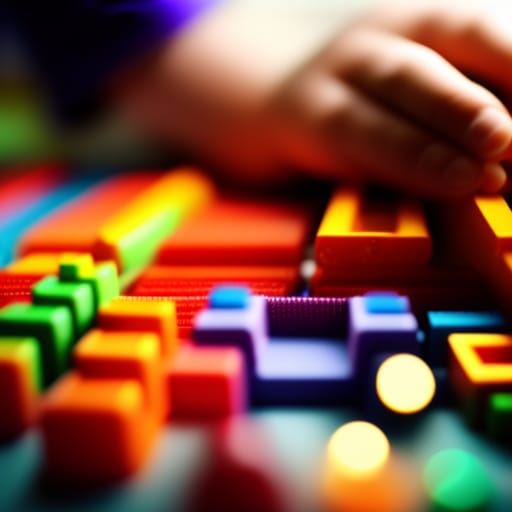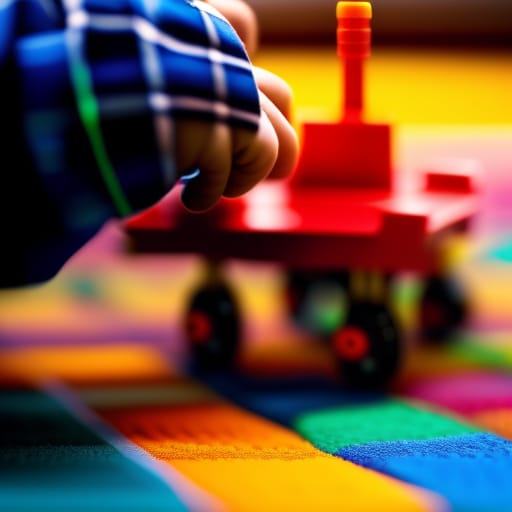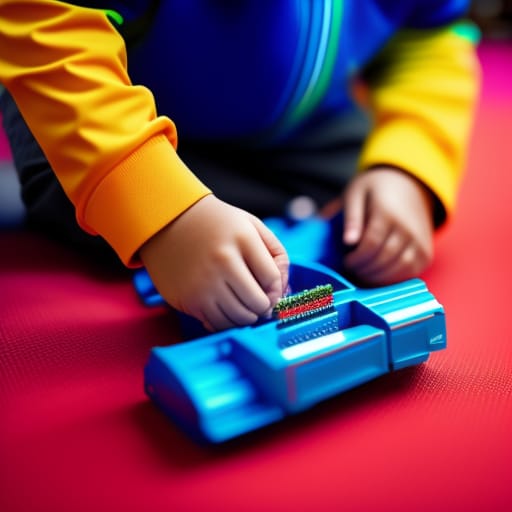At around age 6, kids start showing an increased curiosity about the world around them. Science kits are a great way to nourish their natural desire to learn.
In this beginner’s guide, we’ll explore the benefits of science kits, what to look for when choosing a kit, and the top science kit recommendations for 6 year olds.

What Are Science Kits for 6 Year Olds?
Science kits are hands-on tools designed to teach kids core STEM concepts like physics, chemistry, biology, coding, robotics and more through interactive play and guided experiments. They tap into young children’s inherent curiosity and sense of wonder.
Popular science kits for 6 year olds include:
- Entry-level chemistry sets
- Magnifying glasses and microscopes
- Telescopes
- Fossil dig kits
- Bug catcher and specimen containers
- Gardening starter kits
- Magnet and engineering building sets
- Natural world learning tools like rock collections
Quality kits combine fun with structured learning by letting kids actively participate in the scientific process hands-on.
Benefits of Science Kits for 6 Year Olds
Between ages 5-7, kids start gaining coordination and finer motor skills while their curiosity blossoms. Science kits in this developmental stage offer benefits like:
- Introducing STEM concepts – Foundations in science, tech, engineering, and math.
- Hands-on learning – Active participation improves concept retention.
- Cultivating curiosity – Interactive exploration taps into their inherent curiosity.
- Developing skills – Following instructions, fine motor control, focus.
- Encouraging scientific thinking – Observation, drawing conclusions, testing predictions.
- Inspiring wonder – Sparking awe for the natural world.
- Having fun – Playful learning is engaging and burns positive neural pathways about science.
- Bonding with caregivers – Collaborating on projects builds quality time and relationships.
Starting STEM learning early creates enthusiasm and prepares them for more advanced concepts later on.
Types of Science Kits for 6 Year Olds
There are diverse science kit options designed for the skills and interests of 6 year olds:
Entry-Level STEM Kits
Kits focused on science, technology, engineering, and math fundamentals through hands-on projects. Example activities include:
- Building simple machines, structures, and contraptions
- Basic coding and programming
- Simple robotics
- Magnetism and electricity demos
Chemistry & Physics
Beginner chemistry sets offer safe experiments like making putty or gelatin solids and liquids. Physics kits demo concepts like motion, light, and sound through interactive projects.
Nature Study
Kits focused on natural science include bug catchers, butterfly raising, sea life theme sets, fossil digs, gardening starters, petri dish labs, and more.
Microscopes & Telescopes
Hands-on tools to explore microscopic life and gaze at stars up close. The best are digital models requiring no slide prep.
Science Magic
Make “potions”, erupt mini volcanoes, and more through kits revealing science secrets in cool magical ways.
Other kits cover astronomy, human anatomy, geology, engineering/architecture, coding, robotics, and more!
Top Features to Look For
Focus on kits with features like:
- Age appropriate – Look for the recommended 5-7 age range.
- Multi-faceted – Kits covering a range of science topics hold interest best.
- Good variety – Look for kits with 10+ engaging experiments, projects or tools.
- Hands-on focus – Learning by doing is ideal vs passive watching.
- Parent-child collaboration – Projects designed to be done together build bonds.
- Reusable materials – Components that can be used again provide more value.
- Supports instructions – Clear visual guides help kids follow along and learn.
- Explain concepts – Look for kits teaching the “why” behind experiments.
- Encourages observation – Beyond doing, look for recording sheets to note results.
- Fosters independence – Kits kids can handle parts of themselves build confidence.
Top Science Gifts for 6 Year Old Boys vs Girls
While most kits appeal to both genders, these gifts may align more with specific interests:
Best Science Kits for 6 Year Old Boys
- Robotics sets
- Engineering building kits
- Chemistry kits
- Automation sets
- Science magic kits
- Bug catchers and microscopes
- Dinosaur fossil digs
Best Science Kits for 6 Year Old Girls
- Flower and gardening kits
- Magnifying glasses, microscopes
- Butterfly habitats
- Doctor playsets
- Cooking kits involving science
- Sea life learning kits
- Animal care playsets like pet vet kits
But pick based on your child’s unique personality and interests, not gender! Some love mixing it up.

Best Science Kits for 6 Year Olds By Interest
Tailor the science kit to what excites your child.
For Kids Who Love Animals
- Bug habitat kits
- Butterfly/caterpillar kits
- Sea life learning tools
- Pet veterinarian kits
- Stuffed animal science
For Budding Engineers
- Building sets – LEGO, Magna-tiles
- Robotics kits like Botley
- Automation sets
- Tools and construction kits
For Kids Who Love Nature
- Gardening starter sets
- Bug catcher tools
- Butterfly kits
- Fossil digs
- Rock collecting and identification
- Weather tracking kits
For Space Lovers
- Telescopes designed for kids
- Glow-in-the-dark planet and star sets
- Model rocket kits
- Moon/space fact cards and posters
For Young Chemists
- Entry-level chemistry sets
- Magnifying glasses
- Sensory materials like slime/putty
- Color changing labs
- Magic potion kits
And there are plenty more themes like geology, ecology, physics/engineering, anatomy, etc! Match their science interests.
Best Budget Science Kits Under $25
You don’t need to spend a lot to get a quality science kit. Great budget options under $25 include:
- Scientific Explorer My First Mind Blowing Science Kit – $16.99
- National Geographic Break Open 10 Geodes Kit – $14.99
- Backyard Safari Critter Shack – $9.99
- 4M Crystal Mining Kit – $14.95
- Playz Microscope for Kids – $21.95
- Green Science Solar Rover Kit – $12.99
And even a basic magnifying glass or butterfly garden set can make a great budget science gift.
Best Investment Science Kits Over $50
For kids showing a strong natural interest in science, investing in more advanced kits in the $50-$100 range can be worthwhile:
- Omano Beginner 82 Piece Microscope Set – $64.99
- SmartLab BLAST Rocket Car Science Kit – $22.99
- NATIONAL GEOGRAPHIC Earth Science Kit – $24.99
- Teach My Toddler STEM Learning Kit – $89.00
- KIWIco Koala Crate – $19.95/month
- NATIONAL GEOGRAPHIC Starter Telescope – $49.99
- Melissa & Doug Suspend Family Game – $24.99
Many more great kits are available in the $50-$100 range once they’re ready for more advanced activities.
Best Subscription Boxes with Science Kits
Monthly science subscription boxes deliver new projects and activities regularly:
- KIWIco Crates – $19.95-$24.95/month
- Little Passports Science Kit – $15.95/month
- Green Kid Crafts STEM Box – $20.95/month
- Mel Science Chemistry Kit Subscription – $159.90-$179.90 for 3 months
- Creation Crate STEM Kits – $19.99-$24.99/month
Subscriptions provide new activities plus tools and components each month to complete the projects.
Choosing a Safe Science Kit
While science kits are designed to be safe for children, some key considerations include:
- Supervision – Even safer kits merit adult guidance for young kids.
- Instructions – Read together and follow exactly, note safety guidelines.
- Set up – Use a clean, covered surface newspaper in a garage or outdoors is smart for messier projects.
- Gear – Use kid goggles, gloves, aprons as recommended for experiments as needed.
- Components – Make sure chemicals, soils, liquids etc. are sealed away from little fingers when not in use.
With active participation and oversight, science kits provide a safe avenue for learning. Observe age ratings and read safety notes.
Picking an Educational Science Kit
Seeking science kits that enrich your child’s STEM knowledge? Look for:
- Hands-on learning – Active, engaging projects make concepts stick.
- Explains the “why” – Look for kits teaching the science behind experiments.
- Parent-child collaboration – Guided experiments designed for doing together.
- Science skill-building – Cultivates skills like observing, recording and drawing conclusions.
- Key science concepts – Kits covering core topics like chemistry, physics, nature, biology etc.
- Various fields – Look for kits introducing multiple scientific areas.
- Supplemental materials – Activity books, learning guides, posters etc. to expand on lessons.
- Relevant to interests – Opt for kits involving subjects they find fascinating to enrich current knowledge.

Signs Your Child Will Love a Science Kit
How can you tell if a science kit will captivate your 6 year old? Watch for:
- An insatiable curiosity – your little explorer wants to know how everything works.
- Excitement learning new concepts – they soak up scientific facts eagerly.
- Drawn to scientific shows or books – can’t get enough of dinosaur, space, or other science themes.
- Loves building/tinkering – always constructing gadgets shows an engineering inclination.
- Fascinated by animals, nature or equipment – bugs, birds, weather, your own tools, etc.
- Asks “why” constantly – their questioning mind yearns to understand the world.
- Prefers hands-on play – they’d rather create than watch.
If your child shows these signs, a science kit is sure to be a hit!
Frequently Asked Questions
What are the best science kits for 6 year old girls?
Some top science kit picks for 6 year old girls include butterfly growing kits, sea life learning sets, kids gardening starter kits, doctor playsets with mini microscopes, and cooking kits involving science experiments like crystal growing or lava lamps. Focus on nature, animals, or creative combinations of science and art.
Should I help my child use their new science kit, or let them do it independently?
While many science kits for 6 year olds are designed for parental involvement, it’s good to give them a chance to explore independently too. Read the instructions together first and set them up for success. Remain nearby to supervise and assist if they get stuck or have questions. Celebrate their independence!
Which subscription kit is best for a 6 year old interested in science?
For science-loving 6 year olds, the KiwiCo Koala Crate and Little Passports Science kits deliver new hands-on STEM activities monthly. Both offer age appropriate projects focused on scientific concepts and skills. Try out a monthly plan to nurture their budding interests.
What safety precautions should I take when my 6 year old uses science kits?
Carefully read all safety guidelines and supervise use. Have them wear goggles, gloves, or aprons as recommended. Set up messy projects outdoors or over newspaper. Store chemicals properly when not in use. Make sure kits use safe, non-toxic components appropriate for the age. Follow kit instructions closely and teach science safety.
How can I know if a science kit will be right for my 6 year old’s skills and abilities?
Look for kits designed specifically for ages 5-7, check product descriptions for details on the expected skills required, and read parent reviews to gauge if other kids found the materials engaging and accessible for this age group. Start with beginner-level kits and then move up.